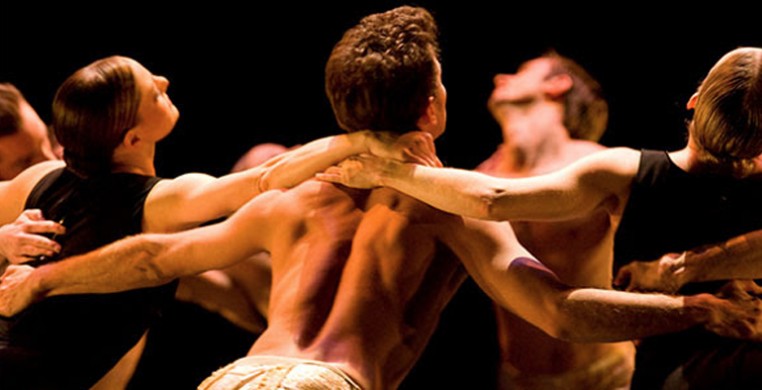“If dance only does what we assume it can do, it will expire. I keep trying to test the limits of what the word choreography means.”
The words of William Forsythe headline the top of page three in a hefty program book outlining the closing engagement for Hubbard Street Dance Chicago’s 36th season. It seems that everything Hubbard Street does, it does well, and last weekend’s concert was no exception.
Three works, each highlighting the subtle versatility of Hubbard Street’s magnificent dancers, made for an eclectic evening that could be interpreted as pure dance in one moment, and purely thought provoking in the next. In the interest of full disclosure, this was a premiere viewing, on my part, of Nacho Duato’s Gnawa and Forsythe’s Quintett. Also on the program is a work new to everyone: the anticipated world premiere from Alejandro Cerrudo, The Impossible.
Nacho Duato’s 2005 Gnawa hints at classical Modern Dance, with shapes and movements that appear to be derived from Martha Graham, as do the black A-line dresses worn by the women. Interspersed throughout dynamic group phrases are mini pas de deux from the power couple of the work (in this case Kellie Epperheimer and Jason Hortin). The piece feels different from the other offerings on the evening, what with its angular, more classical lines. Gnawa could be considered dated if it weren’t so magnificent to watch, the last image of Epperheimer being thrust into the air as the curtain lowers won’t soon be forgotten.
Having never seen Quintett, I had no preconceived notions about what I was about to see, but for a few predictions based on things I’d heard. I knew the dancing would be beautiful. I knew the score would be a long loop resembling Lambchop’s “Song that Never Ends.” I knew the piece is important in the grand scheme of, well, “Dance," and I knew there wouldn’t be much transparency. Quintett was all of those things, and it was stunning to look at. The repeating loop of Gavin Bryars’ orchestral “Jesus’ Blood Never Failed Me Yet” felt at first to be of central importance. Why else must we listen to the same 13 bars over, and over, and over? As the dance wore on, the score felt less important, as though its repeating nature was giving us permission to forget it and focus on the intricate relationships forming between the dancers. Quintett is poignant. It is personal at times, and sterile at others, and ultimately, Quintett is not without its problems, or maybe just curiosities. A fish eye mirror is placed in the upstage right corner, the effect of which is completely lost on the house left audience. The dance begins in a formulaic additive phrase passed back and forth amongst its five cast members, only to dissolve into a more “dancey” dance. A sky motif splashed across the stage right lower quadrant of the cyclorama by a massive instrument. I yearned for each element introduced to be more fully manipulated, to play with the entire stage dressing, which consisted of three white cycloramas framing the space. I wanted the projection to progress and grow across the space as the dancing did, but like the music, it never changed. Should I find myself in a room across a table from Forsythe, I might ask these questions, or I might not. He is, after all, “trying to test the limits of…choreography,” and in doing so, tested my understanding of how each element is meant to work with the others.
The subtleties of Gnawa and Quintett appear to be most important. On the other hand, Cerrudo's The Impossible is anything but subtle. The opening music swells like a dramatic movie score, and we are drawn in to a story of an old couple. At least, we assume Ana Lopez and Jonathan Fredrickson are old by their kyphotic postures and shallow gait. The rest of the story is not as transparent. Mysterious men seem to be enchanting the couple’s household, in addition to a ghost couple (images of Lopez’s and Fredrickson’s younger selves?) who support their weight, return them to temporary youth and vitality, and mirror their movements. The beginning, of all its musical gusto, is really quite simple, and Cerrudo is at his best when he settles into an idea and lives there for awhile. Compared to some of his other works, The Impossible is pared down - that is - until Lopez charges to center-center pointing a gun… and fires. Costume blood is smeared across the set, and the scene is so shocking that everything after that is pretty much irrelevant. Whether or not the piece should have ended there, it’s hard to say, but if Cerrudo was looking to halt our minds as the dance descended to its end, he certainly accomplished that.

